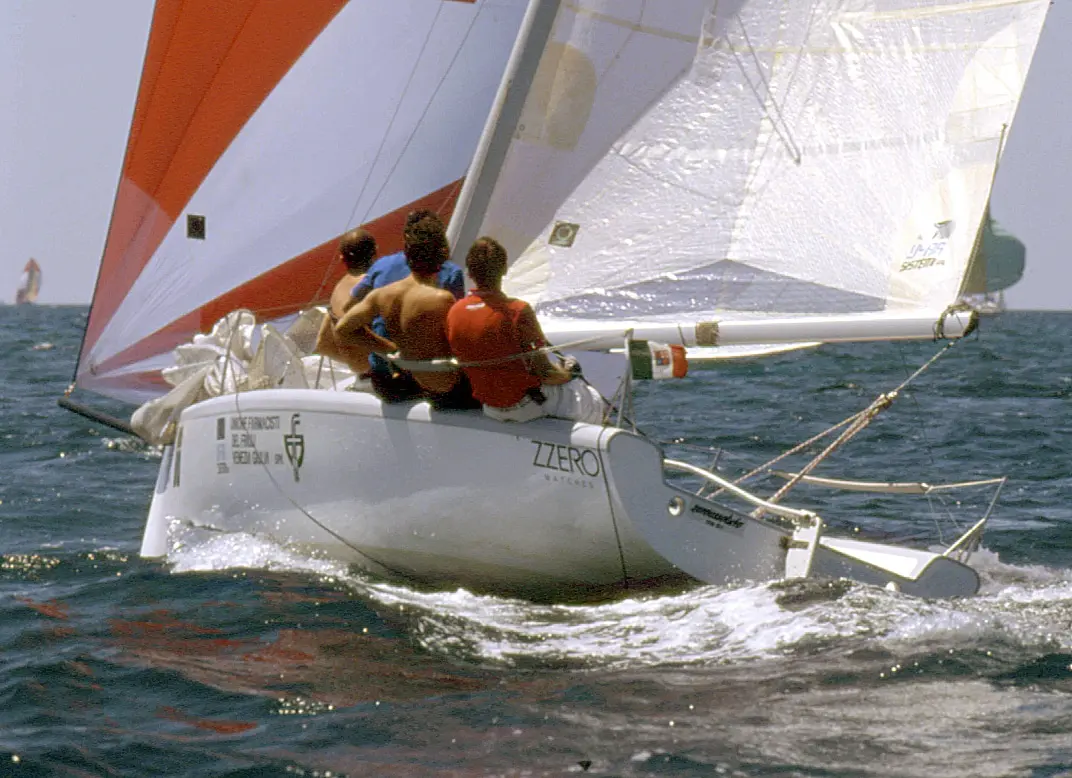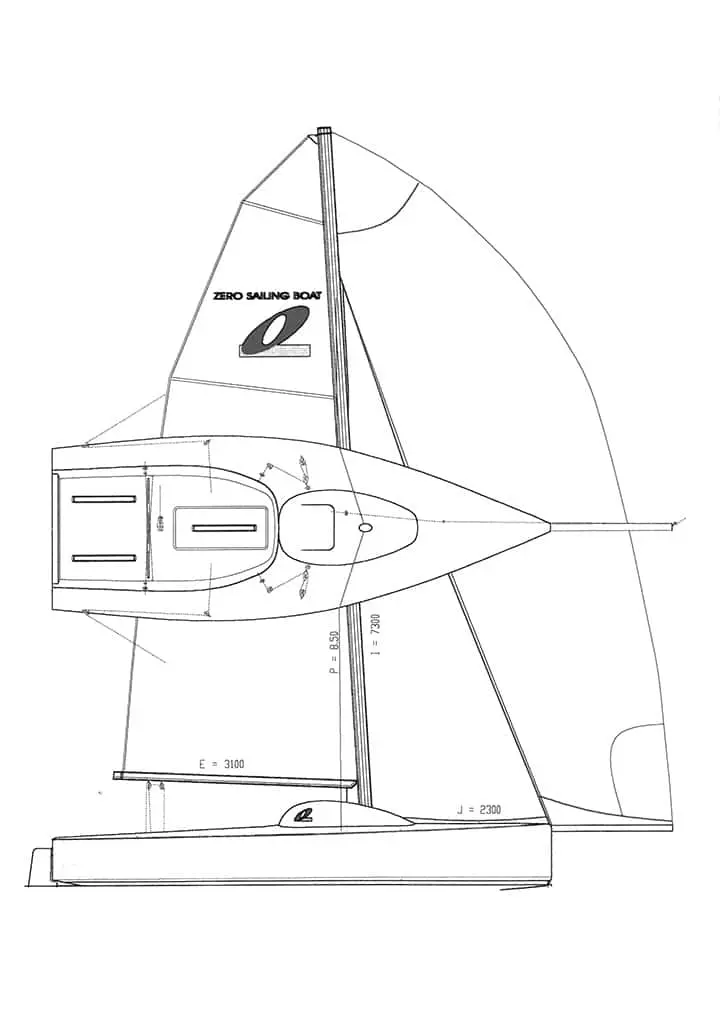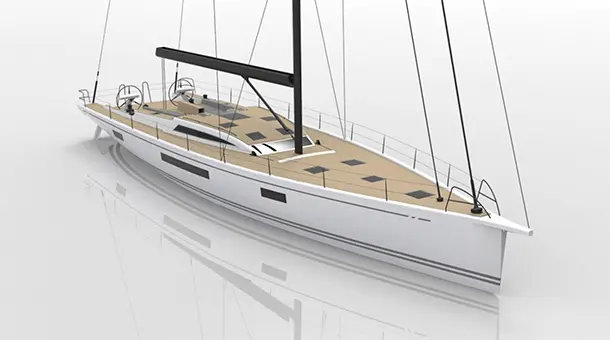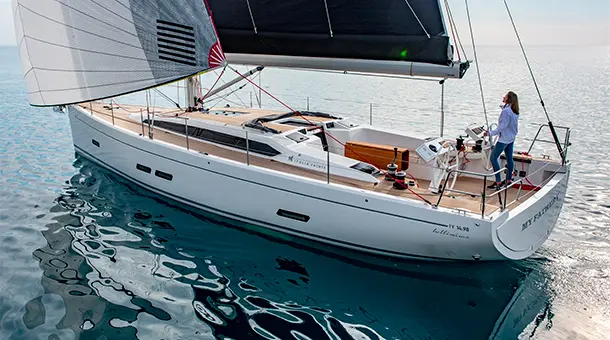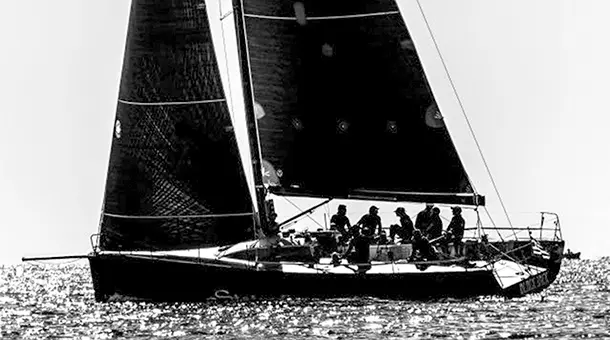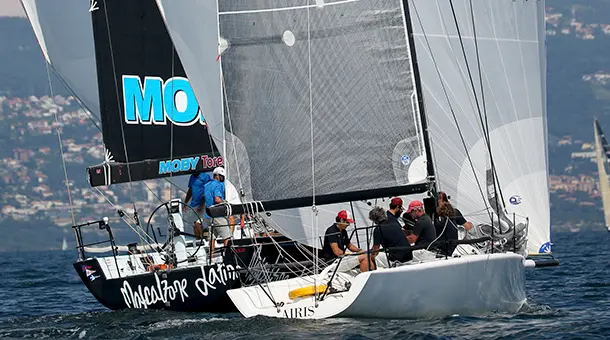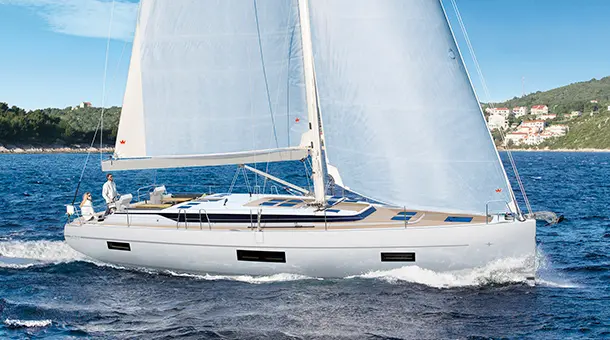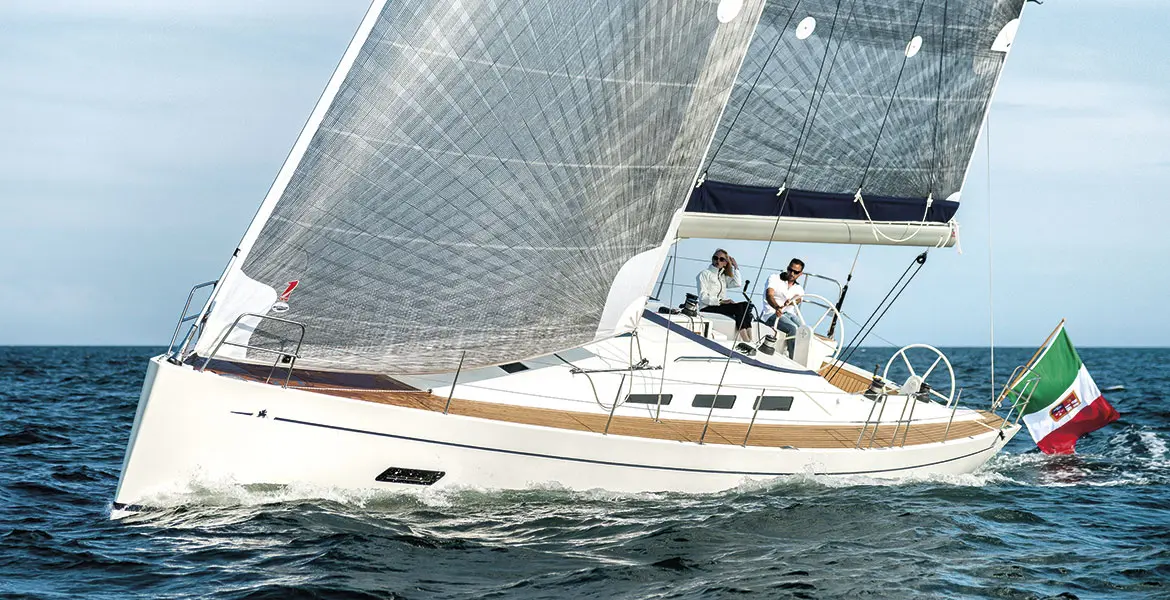The first step to start sailing with an economical, safe and manageable boat, but at the same time, with the best performance level in her category; “Zero” was the link between dinghy and sailing boat.
The Mitsubishi A6M was a light fighter provided to the Japanese Imperial Navy air service, from 1940 to 1945; the Allies commonly called him “Zero”. The Zero was feared and superior to all the rivals of that period and condensed the maximum technical knowledge in product simplification to obtain a light, fast and extremely maneuverable aircraft. The inputs of the “Zero” boat project reflected the same basic concepts, obviously applied to the sailing field. The crew had to be limited to three people, with sail plan and hull designed to ensure high stability, reduced heel and high efficiency. The Zero had a fixed keel with a depth of 1.60 m, retractable for easy positioning on the trailer, external rudder and engine support on the hull. The width had to be reduced to allow transport on the trailer and of course the boat had to guarantee simplicity of rigging and disarming. The hull is built by Advanced Composites of Bedizzole in full laminated and the skins are laid in E-glass impregnated with vinylester resin; the deck is in sandwich and high-density Airex, in order to eliminate the need of reinforcements on the maximum load areas.
In order to make the boat usable both for regatta and for recreation, it was decided to prefer open spaces, opting for a very long (3.0 m) and wide (1.60 m) cockpit. The housing for the outboard motor is at the bottom of the cockpit in the area facing the bow. A small rounded coachroof with an aerodynamic profile facilitates the entry below deck, where a molded and resinate hull bench works as a seat and as a floating reserve at the same time.
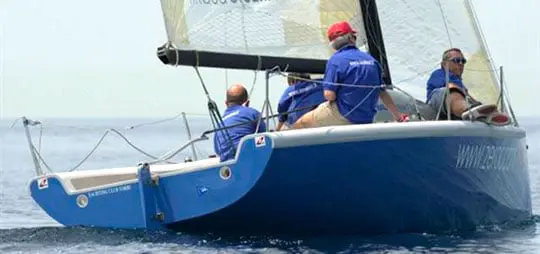
Thanks to that and to the anti-collision waterproof bulkhead at bow, the boat is virtually unsinkable. The edge of the hull is very rounded to reduce the wind grip, to make the toe rail more comfortable and to further sleek the appearance. The rig is essential, without winches: the halyards are held on the mast, there is no aft backstay and the jib sheet point is adjustable on rail. For the mainsail there is a track at the bottom of the cockpit. The gennaker sheets are easy controlled from the cockpit. Zero is intended as a one design class; otherwise, it will be employed on cruise or Libera local classes, fighting with other small protos or production performance boats. The three promoters of Project Zero (Stefano Galletti from Garda lake, Paolo Bona from Verona and Giulio Tarabocchia from Trieste: all serious sailors) for now aim to raise the awareness of the class and they have already identified three areas for initial development: Garda lake and gulfs of Lignano and Trieste. Given the price (29 million lire, without sails) and the quality of the vehicle, they surely have a chance to make it. The Zero One Design sail plan has an innovative adjustable wing mast with standard vertical shrouds and no swept back spriders. In the sail inventory there is a half batten mainsail of 17 sqm a 125% overlapping genoa, with a surface of 11 sqm to be alternate with a smaller stong wind jib with a surface of 7 sqm. Top mast 50 sqm gennaker, with the tack on a telescopic carbon bowsprit and you can also choose a top mast drifter too.

